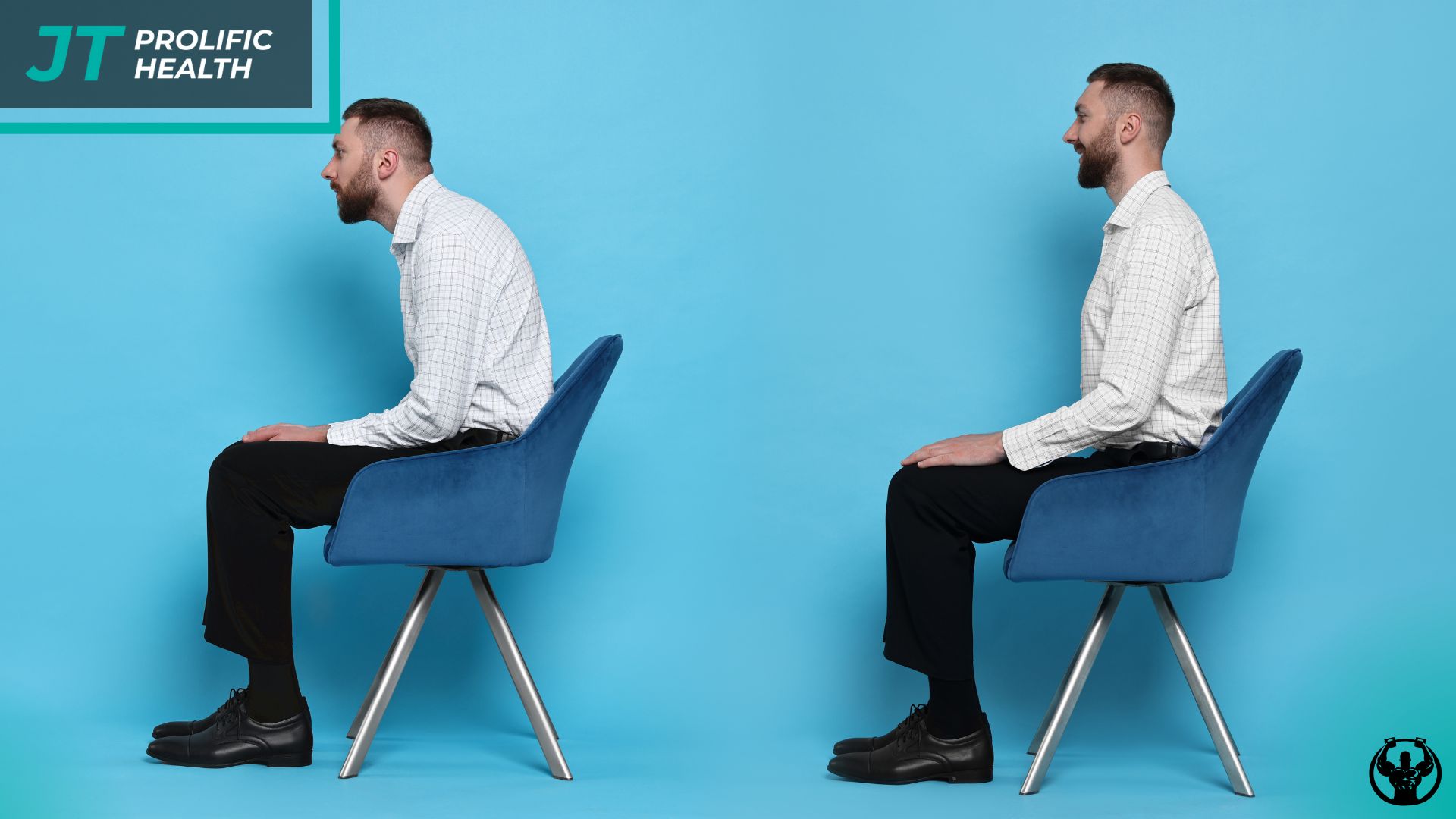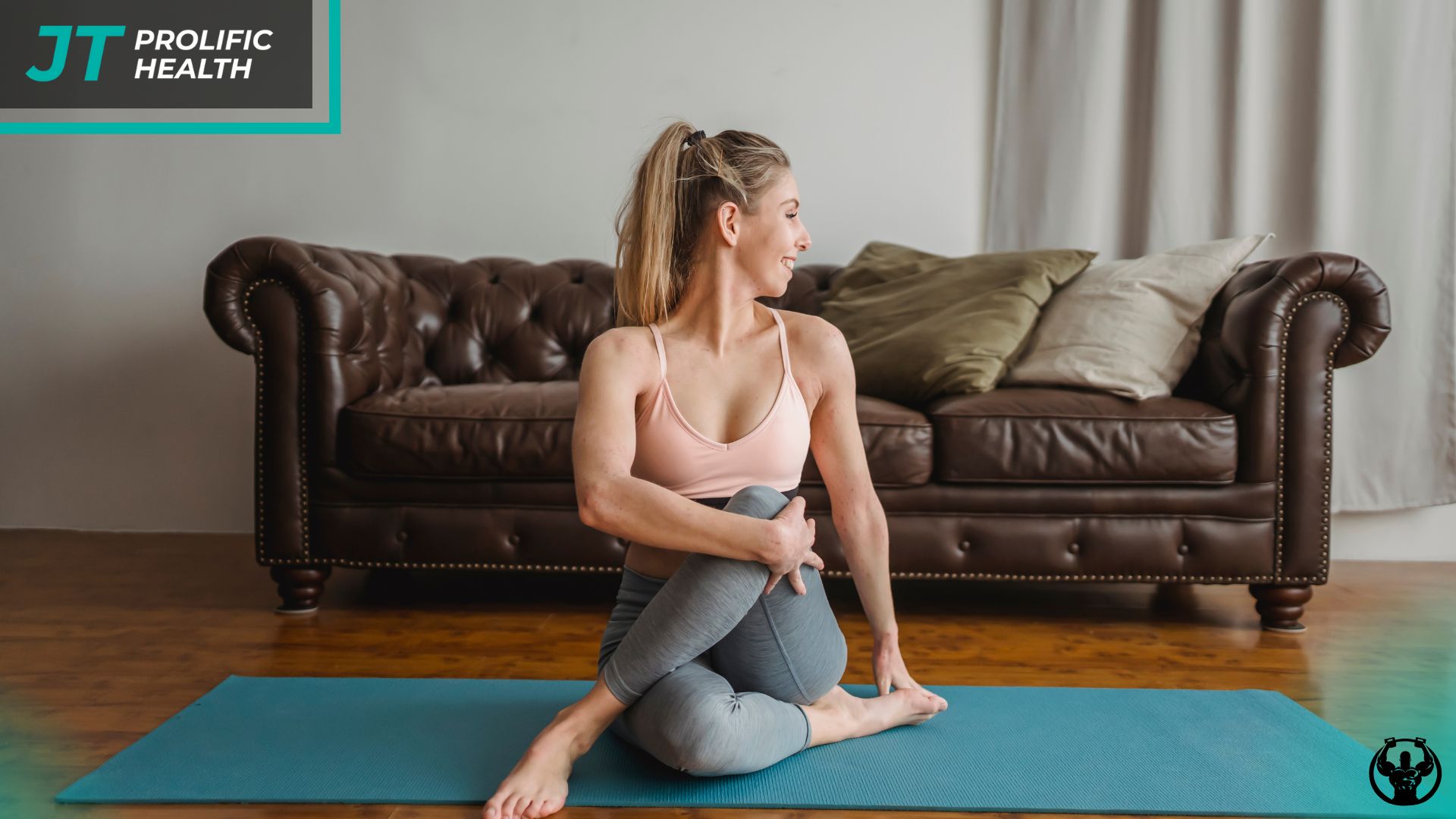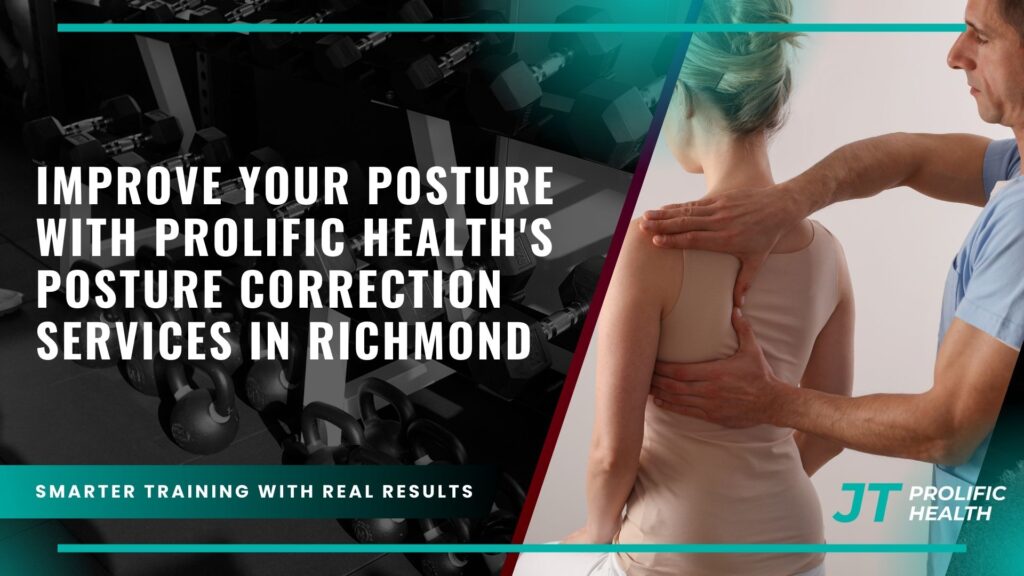Did you know that 80% of adults experience back pain linked to poor alignment? Gravity constantly pulls on your frame, and how you hold yourself shapes everything from energy levels to long-term health. Over time, habits like slouching or leaning forward strain muscles and joints, leading to stiffness and discomfort.
At Prolific Health, we help Richmond and Vancouver residents rebuild strength through personalized plans. Unlike quick fixes, our team identifies why your body feels stiff or achy. We focus on sustainable solutions that fit your lifestyle, whether you work at a desk or stay active outdoors. Many clients begin with private training to build strong foundations tailored to their posture needs.
Proper alignment isn’t just about standing tall—it’s how your bones, muscles, and joints work together. Small adjustments to how you sit, walk, or lift objects can ease tension and boost mobility. Our evidence-based methods address imbalances while teaching you practical strategies for lasting results. For those who enjoy working out alongside others, group strength sessions provide a supportive way to reinforce posture-friendly habits.
Key Takeaways
- Daily habits like sitting or standing affect energy, comfort, and long-term health.
- Targeting root causes—not just symptoms—leads to sustainable improvements.
- Personalized plans adapt to your unique lifestyle and physical needs.
- Understanding body mechanics helps counteract gravity’s effects.
- Professional support in Richmond and Vancouver makes progress accessible.
Understanding the Importance of Good Posture
How you hold your body during daily activities shapes your health more than you might realize. Small habits like hunching over screens or slumping in chairs gradually alter how your muscles and joints function. Over time, these patterns can lead to chronic discomfort that affects your work, hobbies, and quality of life.


The Impact of Poor Alignment on Your Health
When your head shifts forward from your shoulders, it adds extra weight to your neck and upper back. This strains muscles meant for lighter tasks, causing tension headaches and stiffness. Rounded shoulders compress your chest, making breathing less efficient.
Physical therapist DiVincent explains that upper cross syndrome often develops from sitting with a forward head position. Similarly, standing with an arched lower back weakens core muscles. These imbalances create chain reactions – tight hips might lead to knee pain, while weak glutes contribute to lower back stress.
Benefits of Maintaining Proper Posture
Good alignment lets your muscles work as nature intended. Your spine distributes weight evenly, reducing wear on joints. This efficiency means less energy spent fighting gravity and more available for daily tasks.
Proper positioning also supports your nervous system. When nerves aren’t pinched by misaligned bones, they transmit signals clearly. Many clients report better digestion, deeper breathing, and improved focus after addressing postural habits.
Posture Correction Practical Exercises and Routines
Simple movements can make a big difference in how your body feels each day. At Prolific Health, we combine clinical expertise with easy-to-follow routines you can do anywhere. These methods target common tension areas while building strength where it matters most.


Upper and Lower Back Exercises to Feel a Stretch
Try the wall angel technique recommended by Dr. Jennifer Danzo. Press your back against a wall, then slowly glide your arms upward like making snow angels. Hold each position for 5 seconds to activate shoulder muscles.
For tight upper back areas, the doorway stretch works wonders. Place your forearms on a doorframe at 90-degree angles. Step one foot back until you feel your chest opening. Maintain this for 15-20 seconds.
Neck and Shoulder Alignment Techniques
Chin tucks strengthen weakened neck muscles. Gently draw your chin backward while keeping your gaze forward. Repeat 8-10 times to counteract screen-related strain.
Relieve shoulder tension with side-bending stretches. Tilt your head toward one shoulder while reaching the opposite arm downward. Hold for 10 seconds per side to release tight trapezius muscles.
Stretching and Strengthening Techniques for Proper Posture
Balancing flexibility and power transforms how your frame handles daily demands. DiVincent, a physical therapy specialist, notes that tight tissues need lengthening while weak areas require targeted activation. This dual approach helps your body work efficiently against gravity’s pull.


Dynamic Stretching for Flexibility
Controlled movements prepare your muscles for action while improving joint mobility. The cat-cow exercise demonstrates this perfectly. Arch your spine upward like a stretching feline, then dip it downward while lifting your head. Hold each position for two breaths to lubricate spinal joints.
Focus on alignment during stretches. Keep one part stable while moving another, like anchoring your hips during a seated forward fold. Aim for 15-30 second holds repeated 2-3 times. This method safely lengthens tissues shortened by sitting or repetitive motions.
Muscle Strengthening to Support Your Body
Strong core and back muscles act as natural scaffolding. Try the bird dog exercise: kneel on all fours, then extend one arm and the opposite leg. Hold for five seconds while keeping your hips level. This builds stability from shoulders to glutes.
Plank variations challenge your entire body. Start with forearm planks, keeping elbows under shoulders. Progress to side planks as your strength improves. Stop when muscles fatigue – pushing through pain risks injury.
Our Richmond and Vancouver clients benefit from customized routines that adapt as their capabilities grow. Combining these methods creates resilient muscles ready for life’s demands while maintaining comfortable movement patterns. Some choose hybrid training to balance in-person guidance with flexibility for home practice.
Integrating Posture Correction into Your Daily Routine
Small shifts in daily habits can protect your body from strain while boosting energy levels. Whether you’re typing emails or preparing dinner, how you position yourself matters. DiVincent, a physical therapy expert, emphasizes changing positions every 15 minutes and moving every half hour to prevent stiffness.
At Home and Workplace Adjustments
Set your workspace for success. Position your screen at eye level to keep your head centered over your shoulders. Ensure your chair lets your feet rest flat on the floor with knees bent at 90 degrees – this supports your hips and spine.
Stand up every 30 minutes. Walk to refill your water bottle or do a quick wall stretch. At home, bend your knees when lifting laundry baskets and engage core muscles while vacuuming. Side sleepers: place a pillow between your knees to align your hips.
Simple Movements to Avoid Slouching Throughout the Day
Roll your shoulders backward gently every hour. Try seated spinal twists by rotating your torso while holding the chair’s armrest. These motions counteract the forward hunch common during screen time.
Use visual reminders like sticky notes or phone alerts to check your alignment. Mirrors placed near workstations help you notice if your head drifts forward. Consistency turns these small actions into lasting habits that support your body’s natural balance.
Our Local Expertise and Professional Guidance
Your body’s needs change with your environment – and so should your care team. At Prolific Health, we combine neighborhood insights with clinical knowledge to address Richmond and Vancouver’s unique health demands. Whether you’re recovering from an injury or preventing future issues, online coaching can complement in-person strategies, keeping you consistent even with a busy schedule.
Richmond and Vancouver Community Insights
Tech workers here often develop rounded shoulders from desk work, while active hikers might strain their lower back. Physical therapist DiVincent emphasizes that early assessment prevents minor issues from becoming chronic pain. We’ve helped office workers realign their shoulder blades through targeted exercises and guided parents on lifting techniques to protect their spines.
Collaboration With Movement Specialists
Our network includes athletic trainers and massage therapists who share practical tips for daily life. For example, kitchen counter stretches can ease tight shoulder blades after gardening. We teach you how to recognize when your body needs adjustment – like that subtle ache between your shoulder blades signaling poor alignment.
Working with local experts means consistent strategies across your care. If a physical therapist suggests core-strengthening moves, we’ll reinforce those techniques during sessions. This teamwork helps you build habits that stick, whether you’re at work in Vancouver or enjoying Richmond’s trails.
Conclusion
Achieving lasting comfort requires understanding how your hips, shoulders, and knees work together. When muscles balance strength with flexibility, your body moves efficiently. Simple changes like adjusting your chair height or bending your knees when lifting protect joints from strain.
If home exercises aren’t easing discomfort, our team identifies tight areas and weak spots. We assess how your legs bear weight differently or if one hip sits higher. These details shape personalized strategies for work, exercise, and daily life.
Ready to feel stronger in every movement? Call Prolific Health at 604 818 6123. Our Richmond and Vancouver experts create plans addressing your unique needs – from proper screen height to targeted stretches. Take the first step toward pain-free living today and contact us.




